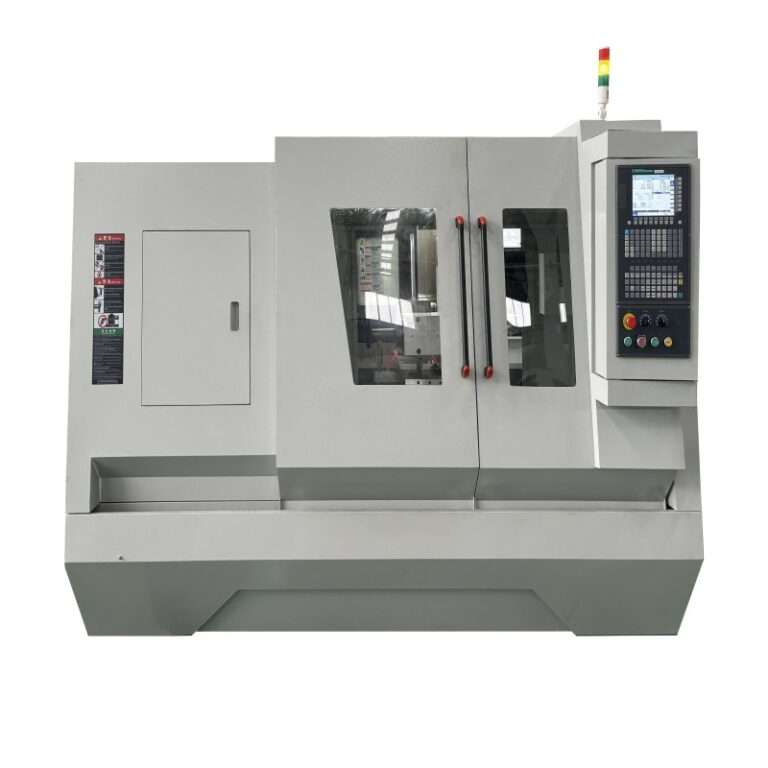A well-kept whirling machine doesn’t just run longer — it runs better. In the competitive world of manufacturing, you can’t afford downtime, slow time, or quality time. You output every part you make based on tight tolerances, the same speeds, and fine finishes.
That sort of dependability begins with good maintenance. When you invest in maintenance, your machine thanks you with smoother operation, fewer repairs, and longer tool life.
In this column, we’ll go through how you can keep this whirling machine of yours running in top shape.
Learn the Purpose of Change Types of Change.
Maintenance is not something you should save up for when it breaks; it’s something you should plan for. By then, it’s often too late. Preventive maintenance is all about periodic care. It prevents small problems from growing into costly ones.
A spinning machine has lots of moving parts — spindles, cutting heads, motors, guides, and coolant systems. Each component needs regular checks. If it misses one of those, the machine does subpar.
Preventive care isn’t about perfection. It’s about consistency. A daily five-minute check is worth more than a once-a-year overhaul. Catch the issues early, and your assembly line keeps rolling.
Keep the Machine Free From Dirt And Debris
The first principle of machine health is cleanliness. Can you produce a clean result from a dirty machine? Chips, dirt, oil, and coolant all impede accuracy and efficiency.
Wipe off the machine at the end of every shift. Especially check the guideways, the tool holders, and the cutting edges. Particles as small as fine dust can accumulate and impact the alignment over time.
Simply apply a clean rag, and avoid forcing dirt into tight spaces. Your spinning machine’s cutting chamber must be kept clean at all times. When this chamber is clean, the cut remains precise.
Lubricate According to the Schedule
Every whirling machine needs lubrication. Deprive these parts of it, and moving ones grind down, heat up, and break. But it doesn’t work with just any kind of lubrication. We recommend following the manufacturer’s instructions for the proper oil type and lubrication period.
Lubricate all important parts, especially guides, grooves, bearings, and moving joints. Too little, and the parts wear out rapidly. Too little, and it fills with dust, restricting travel.
A wise worker checks the oil levels before long shifts. This little habit can save you thousands on repair bills and weeks of downtime.
Inspect and Replace Worn Tools
The cutters in a whirling machine earn their pay. They run at very high speeds, generate heat, and shape hard material. The best of tools will become worn over time. Dull cutting edges will produce burrs, chatter, or poor thread finish.
Check tool wear frequently. Gauge thread sizes and check surface finish. If something feels awry, check the cutters. The new tool is faster and more precise.
Have some spare tooling on hold so you don’t waste time changing tools. Wear on a tool is a given, but loss of quality doesn’t have to be.
Monitor Coolant System Health
A coolant system in a whirling machine maintains the correct temperature in all components. It’s used to wash away chips and to minimize friction.” When this fails, tool life decreases, and the quality of the parts is reduced.
Check coolant levels every day. If the liquid is cloudy, soiled, or smells musty, toss the liquid. Verify that filters are clean and nozzles are clear of obstructions. A poor coolant stream will never reach the cutting edge, resulting in overheating.
Also, inspect hoses and fittings. Even a minor areawide leak can forebode larger problems later.
Calibrate and Align Regularly
Good welds can change the location over time of machinery components. The natural vibrations from everyday use can cause the alignments to shift, resulting in poor thread geometry or mixed cuts. “It gets your head on straight again,” Father Jim says after a regular calibration.
Ensure alignment through the use of precision gauges and regular inspections. Compare specifications with actual thread measurements. The moment they move off course, recalibrate.
When your whirling machine stops, the tight tolerances it maintains also come to a halt. (If you don’t keep everything tightly aligned, you get wonky bounds: not one wobbly bound, but wonky bounds where everything is out of whack and nothing comes out the way it should.)
Keep Records and Establish a Routine
A good maintenance plan isn’t to be memorized — it’s to be tracked. Note what was checked, cleaned, and replaced. Keep a log card by the machine or use a digital one.
Maintenance records tell a story. They can help you identify patterns, avoid recurring mistakes, and schedule downtime effectively. What becomes a logged issue today may save a critical failure tomorrow.
Create a chart that lists all the tasks you need to accomplish each day, week, and month. Delegate and hold your team responsible. Your machine is worth that attention — and your goals depend on it.
Think of Your Spinning Machine as a Partner
In a lot of ways, that whirring contraption of yours is a shop-floor partner. It provides quick, accurate, repeatable timing. But it only runs that way when propped up by you.
Maintenance is more than just tools and oil.” It’s really about discipline, respect, and attention to detail. It’s treating the machine as you would your best team member — with gentleness and consistency.
When you do everything by the book, performance is never left to chance. Parts stay within spec. Deadlines stay on track. And the dividends on that investment just keep coming, day by day.
